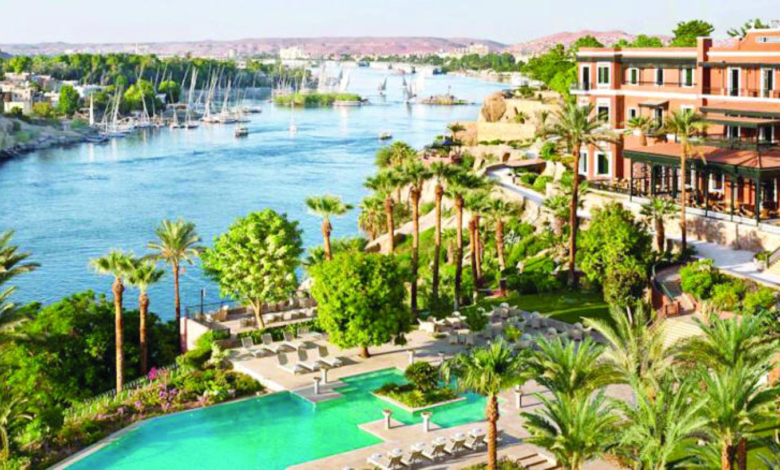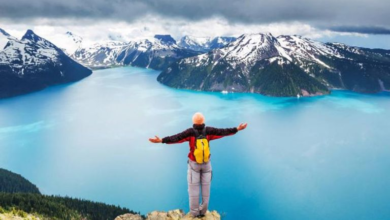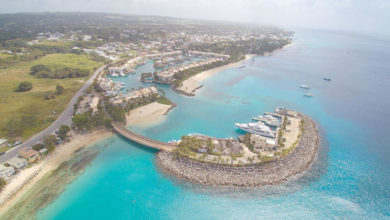“Unlocking the Hidden Gems: Embarking on a Mesmerizing Journey through Iran’s Rich Tapestry of Travel and Tourism”

“Unlocking the Hidden Gems: Embarking on a Mesmerizing Journey through Iran’s Rich Tapestry of Travel and Tourism”
Introduction:
Iran, a land of ancient civilization and breathtaking landscapes, has long been shrouded in mystery and misconceptions. However, in recent years, this enchanting country has emerged as a must-visit destination for intrepid travelers seeking an authentic and immersive experience. From the vibrant bazaars of Tehran to the majestic ruins of Persepolis, Iran offers a treasure trove of cultural, historical, and natural wonders that are waiting to be explored. So pack your bags, leave your preconceptions behind, and embark on a mesmerizing journey through Iran’s rich tapestry of travel and tourism.
- Unveiling Iran’s Cultural Kaleidoscope:
Iran boasts a rich and diverse cultural heritage that spans thousands of years. Delve into the bustling metropolis of Tehran, where ancient traditions blend seamlessly with modern urban life. Discover the architectural marvels of Isfahan, with its stunning mosques and palaces adorned with intricate tilework. Visit the ancient city of Yazd, a UNESCO World Heritage site, and immerse yourself in its labyrinthine streets, windcatchers, and Zoroastrian fire temples. Experience the warm hospitality of Iranians as you engage in conversations, savor traditional cuisine, and partake in vibrant festivals. - Journey Through Time: Exploring Iran’s Historical Marvels:
Iran’s historical sites offer a glimpse into the grandeur of past civilizations. Marvel at the ruins of Persepolis, once the ceremonial capital of the mighty Persian Empire. Explore the ancient city of Pasargadae, the burial place of Cyrus the Great, founder of the Achaemenid Empire. Visit the stunning Jameh Mosque of Isfahan, an architectural masterpiece spanning several centuries. Discover the magnificent Golestan Palace in Tehran, a UNESCO World Heritage site that showcases Persian art and architecture. - Nature’s Splendor: Iran’s Diverse Landscapes:
Beyond its cultural and historical treasures, Iran boasts an astonishing variety of landscapes. From the lush forests of Gilan to the vast deserts of Dasht-e Kavir and Dasht-e Lut, nature lovers will find themselves in awe of Iran’s natural wonders. Hike among the towering peaks of the Alborz Mountains or relax by the pristine shores of the Caspian Sea. Embark on an unforgettable journey to the otherworldly beauty of the Badab-e Surt terraces or the surreal salt flats of the Hormuz Island. - Persian Gastronomy: A Feast for the Senses:
Iranian cuisine is a delightful fusion of flavors, colors, and aromas. Indulge in kebabs and fragrant rice dishes, such as the world-renowned saffron-infused Persian rice. Sample an array of mezze-style appetizers and succulent stews bursting with herbs and spices. Sip a cup of traditional Persian tea while enjoying the serene ambiance of a traditional teahouse. Culinary enthusiasts will find themselves in gastronomic heaven as they explore the diverse culinary traditions of Iran. - Navigating Travel in Iran: Practical Tips and Recommendations:
To ensure a smooth and enjoyable journey, it is essential to be prepared and informed. Learn about the visa requirements, local customs, and etiquette. Discover the best time to visit different regions of Iran, as each season presents unique opportunities. Familiarize yourself with the local transport options and consider hiring a knowledgeable guide to enhance your experience. Above all, approach your travels with an open mind and embrace the enriching encounters that await you in Iran.
Conclusion:
Iran’s travel and tourism scene has evolved, inviting travelers to uncover its hidden gems and embrace its authentic beauty. With its rich cultural heritage, historical marvels, diverse landscapes, and tantalizing cuisine, Iran offers a captivating blend of old and new. So, set aside any preconceived notions and embark on an extraordinary journey through Iran, where you’ll find yourself immersed in a tapestry of wonders that will leave an indelible mark on your soul.

Here are some additional details about travel and tourism in Iran:
- Safety and Security:
Iran is generally a safe country to visit, with low crime rates and a welcoming population. However, it’s always advisable to exercise caution and stay updated on the latest travel advisories before your trip. Respect local customs, dress modestly, and adhere to Islamic traditions to ensure a smooth and respectful experience. - Hospitality and Cultural Etiquette:
Iranians are renowned for their warm hospitality and friendliness towards visitors. It’s common to be invited into homes for tea or meals, and locals are often eager to engage in conversations and share their culture. Remember to reciprocate their kindness and show respect for their customs and traditions, such as removing your shoes when entering someone’s home and using your right hand for greetings and eating. - Visa Requirements:
Most visitors to Iran require a visa to enter the country. The process typically involves obtaining an authorization code from the Ministry of Foreign Affairs or applying through an Iranian embassy or consulate. It’s recommended to start the visa application process well in advance of your planned travel dates to allow for any necessary processing time. - Best Time to Visit:
Iran experiences diverse climates due to its size and geographical features. Generally, the spring and autumn months (March to May and September to November) are considered the best times to visit, with pleasant temperatures and milder weather. However, specific regions may have their own optimal times. For example, the summer months are ideal for exploring the northern coastal regions, while winter offers opportunities for skiing in the mountains. - Transportation and Getting Around:
Iran has a well-developed transportation infrastructure, including domestic flights, trains, and an extensive bus network. Tehran has a metro system, making it convenient for getting around the capital city. Taxis and ride-sharing services like Snapp and Tap30 are popular options for short distances within cities. Hiring a local driver or guide can be beneficial, especially for exploring remote areas or historical sites. - Currency and Money Matters:
The official currency of Iran is the Iranian Rial (IRR). However, due to the country’s complex currency system, it’s common to use the term “Toman” in everyday transactions. One Toman is equal to 10 Rials. It’s advisable to carry a mix of cash (preferably in smaller denominations) and an internationally accepted debit or credit card. ATMs are widely available in major cities, but it’s always a good idea to have some cash on hand, especially in more rural areas. - Cultural and Historical Highlights:
Iran’s cultural and historical attractions are abundant and diverse. In addition to the well-known sites like Persepolis, Isfahan’s Naqsh-e Jahan Square, and Shiraz’s Nasir al-Mulk Mosque (known as the Pink Mosque), there are numerous hidden gems to discover. Explore the ancient city of Yazd with its UNESCO-listed historic center, wind towers, and traditional mud-brick architecture. Visit the stunning mausoleums and shrines in Mashhad, the holiest city in Iran. Don’t miss the picturesque village of Abyaneh, known for its red mud-brick houses and traditional way of life. - Gastronomic Delights:
Iranian cuisine is a delightful fusion of flavors and ingredients, influenced by Persian, Arab, Turkish, and Central Asian culinary traditions. Don’t miss the opportunity to try traditional dishes such as Chelo Kebab (grilled meat with saffron-infused rice), Ghormeh Sabzi (herb stew), and Fesenjan (pomegranate and walnut stew). Explore bustling local markets and bazaars to sample an array of fresh fruits, nuts, spices, and sweets like Gaz and Sohan.
Remember that travel experiences can vary, and it’s always recommended to do further research, consult official travel resources, and consider hiring local guides or tour operators who can provide personalized insights and assistance during your visit to Iran.

Here are some more details about travel and tourism in Iran:
https://qeeq.tp.st/6ViEGWIo
- Shopping and Souvenirs:
Iran is a shopper’s paradise, offering a wide range of unique and traditional products. Explore the vibrant bazaars and markets where you can find exquisite Persian carpets, intricately designed textiles, handcrafted pottery, and beautiful Persian miniatures. Other popular souvenirs include saffron, traditional spices, miniature paintings, calligraphy artworks, and intricately patterned Persian tiles. - Festivals and Celebrations:
Iranians celebrate a variety of cultural and religious festivals throughout the year, providing visitors with an opportunity to witness and participate in these vibrant events. One of the most significant celebrations is Nowruz, the Persian New Year, which takes place in late March and marks the beginning of spring. During this time, streets come alive with festivities, and families gather to enjoy traditional meals, exchange gifts, and engage in joyful customs. - Traditional Accommodations:
For a truly authentic experience, consider staying in traditional accommodations such as boutique hotels, historical caravanserais, and traditional guesthouses called “khanqah” or “saraye.” These establishments offer a glimpse into Iran’s rich architectural heritage and provide a unique ambiance that blends history with modern comforts. - Religious Sites:
Iran is home to numerous religious sites of great significance. The holy city of Qom is an important pilgrimage destination for Shia Muslims, housing the renowned Masumeh Shrine. The city of Mashhad is home to the magnificent Imam Reza Shrine, the largest mosque in the world by area and a major pilgrimage site. Visitors are advised to dress modestly and adhere to local customs when visiting religious sites. - Outdoor Adventures:
Nature enthusiasts will find plenty of opportunities for outdoor adventures in Iran. The country’s diverse geography offers activities such as hiking, trekking, skiing, and mountaineering. The Alborz and Zagros mountain ranges provide stunning landscapes for outdoor exploration, including climbing Mount Damavand, the highest peak in Iran. The northern regions boast lush forests, scenic valleys, and picturesque coastal areas, while the deserts in the south offer unique experiences like camel trekking and sandboarding. - Health and Safety:
It’s important to take necessary health precautions before traveling to Iran. Check with your healthcare provider about recommended vaccinations and ensure you have travel insurance that covers medical expenses. Drinking bottled water is advisable, and it’s also recommended to carry basic medication and a first aid kit. Be cautious of extreme weather conditions, especially in desert areas, and follow safety guidelines for outdoor activities. - Photography Opportunities:
Iran’s rich cultural heritage, stunning landscapes, and vibrant markets provide excellent opportunities for photography. However, it’s important to respect the privacy and cultural sensitivities of the locals. Always ask for permission before photographing individuals, especially in religious sites, and be mindful of any restrictions on photography in certain areas.
Remember to check the latest travel advisories and guidelines before your trip, as conditions and regulations may change. Embrace the spirit of adventure, engage with the locals, and savor the diverse experiences that Iran has to offer.



